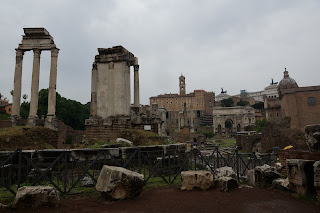Today, our tour guide told us that churning dirt still leads to finds of precious artifacts. As the cool wind blew, and the raindrops hit, I could feel the sense of religious, cultural and political significance, while walking through the Roman forum ruins. Craning my neck, I stared at magnificent marble columns built for the glory of the city. Next to the columns, was the place where the Biblical apostle Paul once walked, the beloved leader Julius Cesar was killed and up on the hill was the Roman Senate, the building that the United States modeled its own Senate after.
The old and the new clashes in Rome everyday. The city continues to excavate the territory and cancel or delay construction because everywhere you step, an ancient, once vibrant city, lies beneath. Since 1909, Italian law has stated that antiquities are primarily state property.
Whether or not you’re an art dealer who disagrees with the Italian state’s efforts or a bitter landowner who found some ancient pottery in your back yard, the importance of the history buried under our feet in Italian soil is the same. Everyone can marvel at the rich heritage in Rome and across Italy. The people here can feel it as they hit the pavement with fast-paced steps on a daily basis to accomplish every day tasks.
So much history packed into one city will take your breath away. There's a difference between knowing Rome is historical and understanding that Rome is historical. To understand it is to feel the significance weigh on your mind while your feet crunch against the gravel where the Romans walked, or to touch a piece of marble just because you know someone else influential has likley touched the same piece many years ago.
Giovanna insists that we know ‘why’ rather than ‘what.’ Dates and times and other monotonous info won’t stick and don’t leave lasting impressions. The reason is what defines the past and leads us to explanations of the present. Rome truly is a two-part city—an ancient portal beneath us and one of the world’s metropolises from the pavement up.






No comments:
Post a Comment